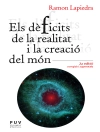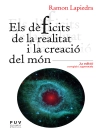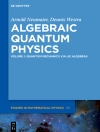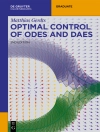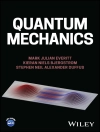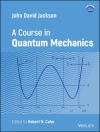This volume of the CRM Conference Series is based on a carefully refereed selection of contributions presented at the ’11th International Symposium on Quantum Theory and Symmetries’, held in Montréal, Canada from July 1-5, 2019. The main objective of the meeting was to share and make accessible new research and recent results in several branches of Theoretical and Mathematical Physics, including Algebraic Methods, Condensed Matter Physics, Cosmology and Gravitation, Integrability, Non-perturbative Quantum Field Theory, Particle Physics, Quantum Computing and Quantum Information Theory, and String/ADS-CFT. There was also a special session in honour of Decio Levi. The volume is divided into sections corresponding to the sessions held during the symposium, allowing the reader to appreciate both the homogeneity and the diversity of mathematical tools that have been applied in these subject areas. Several of the plenary speakers, who are internationally recognized experts in theirfields, have contributed reviews of the main topics to complement the original contributions.
Daftar Isi
Chapter 1.Spin chains of Haldane-Shastry type: a bird’s eye view. -Chapter 2.Features of discrete integrability.- Chapter 3.Darboux-Backlund transformations for Spin-valued linear problems.- Chapter 4.Painlev e IV transcendents generated from the complex oscillator.- Chapter 5.The Veronese sequence of analytic solutions of the CP2s sigma model equations described via Krawtchouk polynomials.- Chapter 6.A novel integrable fourth-order di erence equation admitting three invariants.- Chapter 7.Weighted Hurwitz numbers, -functions and matrix integrals.- Chapter 8.Constant curvature holomorphic solutions of the Constant curvature holomorphic solutions of the supersymmetric G(2; 4) sigma model.- Chapter 9.How to deal with nonlocality and pseudodi erential operators. An example: the Salpeter equation.- Chapter 10.A new approach to analysis of 2D higher order quantum superintegrable systems.- Chapter 11.Ladder operators and rational extensions.- Chapter 12.Tachyons and Representations of Sp(2;R).- Chapter 13.A Confined Quasi-Maximally Superintegrable N-dimensional System, Classical and Quantum, in a Space with Variable Curvature.- Chapter 14.Conditional discretization of a generalized reaction-di usion equation.- Chapter 15.Discrete Curve Flows in Two-Dimensional Cayley{Klein Geometries.- Chapter 16.Zernike system stems from free motion on the 3-sphere.- Chapter 17.W-algebras via Lax type operators.- Chapter 18.Color Algebraic Extension of Supersymmetric Quantum Mechanics.- Chapter 19.The Racah algebra and sln.- Chapter 20.On Reducible Verma Modules over Jacobi Algebra.- Chapter 21.Howe duality and algebras of the Askey{Wilson type: an overview.- Chapter 22.Second-order supersymmetric partners of the trigonometric Rosen-Morse potential.- Chapter 23.A noncommutative geometric approach to the Batalin-Vilkovisky construction.- Chapter 24.A new method for constructing squeezed states for the isotropic 2D harmonic oscillator.- Chapter 25.Projective representations ofthe inhomogeneous symplectic group: Quantum symmetry origins of the Heisenberg commutation relations.- Chapter 26.Electron in bilayer graphene with magnetic elds associated to solvable potentials.- Chapter 27.Twist Knot Invariants and Volume Conjecture.- Chapter 28.Demazure Formulas for Weight Polytopes.- Chapter 29.Point transformations: exact solutions of the quantum timedependent mass nonstationary oscillator.- Chapter 30.Influence of the Electron-Phonon Interaction on the Topological Phase Transition in Bi Te I.- Chapter 31.Nonlinear coherent states for anisotropic 2D Dirac materials.- Chapter 32.Monopole operators and their symmetries in QED3-Gross-Neveu models.- Chapter 33.Critical exponents for the valence-bond-solid transition in lattice quantum electrodynamics.- Chapter 34.Emergent geometry from entanglement structure.- Chapter 35.Interplay of Coulomb repulsion and spin-orbit coupling in superconducting 3D quadratic band touching Luttinger semimetals.- Chapter 36.Soft degrees of freedom, Gibbons-Hawking contribution and entropy from Casimir effect.- Chapter 37.Probes in Ad S3 Quantum Gravity.- Chapter 38.Fundamental Physics, the Swampland of E ective Field Theory and Early Universe Cosmology.- Chapter 39.Scale-invariant scalar eld dark matter through the Higgs portal.- Chapter 40.The moduli portal to dark matter particles.- Chapter 41.Unified Superfluid Dark Sector.- Chapter 42.de Sitter Vacua in the String landscape: La Petite Version.- Chapter 43.Intensity mapping: a new window into the cosmos.- Chapter 44.Aberration in Gravito-Electromagnetism.- Chapter 45.Stable, thin wall, negative mass bubbles in de Sitter space-time.- Chapter 46.Ferromagnetic instability in PAAI in the sky.- Chapter 47.Three partial di erential equations in curved space and their respective solutions.- Chapter 48.What does the Central Limit Theorem have to say about General Relativity?.- Chapter 49.Dressing for a vector modi ed Kd V hierarchy.- Chapter 50.Time evolution in quantum systems and stochastics.- Chapter 51.Solvable Models of Magnetic Skyrmions.- Chapter 52.Applications of Symmetry to the Large Scale Structure of the Universe (scale invariance) the to the hadronic spectrum.- Chapter 53.Leptophobic Z0 in supersymmetry and where to find them.- Chapter 54.Axion-like Particles, Magnetars, and X-ray Astronomy.- Chapter 55.Anomalies in B Decays: A Sign of New Physics?.- Chapter 56.Loopholes in WR searches at the LHC.- Chapter 57.t-t-h, top & bottom partners, and the Brane-Higgs limit.- Chapter 58.Mirror Dirac leptogenesis.- Chapter 59.Fast tests for probing the causal structure of quantum processes.- Chapter 60.Qubits as edge state detectors: illustration using the SSH model.- Chapter 61.Rep LAB: a computational/numerical approach to representation theory.
Tentang Penulis
Dr. Manu Paranjape is a professor in the Département de physique, Université de Montréal. He is also a member of the Centre de recherches mathématiques. His general research area is theoretical physics, including induced quantum numbers, Skyrmions, non-commutative geometry, quantum spin systems, instantons and aspects of gravity.
Dr. Richard Mac Kenzie is a professor of physics at the Université de Montréal. His research is in theoretical physics and applications in a variety of fields, including particle physics, cosmology, condensed matter physics and quantum information.
Dr. Zora Thomova is a Professor of Mathematics at SUNY Polytechnic Institute, Utica NY. Her research in the area of mathematical physics focuses on symmetries of differential and difference equations arising in physics, engineering and other sciences.
Dr. Pavel Winternitz is a professor at the Centre de recherches mathématiques, Université de Montréal. His research isdevoted to applications of group theory to physics. In particular nonlinear phenomena in physics, integrable and superintegrable systems and symmetries of differential, difference and delay equations.
Dr. William Witczak-Krempa is an assistant professor in the Department of Physics at Université de Montréal, where he holds a Canada Research Chair on Quantum Phase Transitions. He is a member of the Centre de recherches mathématiques. His research aims to understand and characterize novel quantum phases of matter by using an interdisciplinary approach. He has been active in studying quantum criticality, topological phases, and entanglement in many-body systems.



